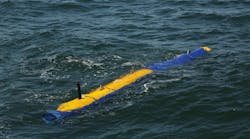The volume of this visual media, however, is so quickly as to outpace the ability of military intelligence analysts to review or analyze every image. VMR technology is expected to extract tactically relevant information for the human analyst and alert him to scenes that warrant further attention for counter-insurgency and counter-terrorism operations.
The VMR system is to be an easy-to-use software application in which users submit photos or video frames of interest and indicate what they would like to know about the contents, DARPA officials say. In response, the VMR system will give the user a set of possible answers, with the system’s assumptions.
DARPA researchers expect the VMR program to use augmented reality applications for smart phones and image search capabilities of popular internet search engines, as well as image-recognition techniques for photos and videos. VMR technology should use an open architecture for quick improvements, systems upgrades, and technology insertion.
DARPA researchers want to create an intelligent meta-algorithm that interprets photos and video, looks for meta-data, recognizes text, and sharpens imagery, and then decides which computer vision algorithms to apply. DARPA wants the companies ultimately chosen to participate in the VMR program to work as cooperative, virtual teams.
Companies interested in attending the VMR industry day briefings should register online at https://www.csc-ballston.com/darpa/registration/intro.asp?regCode=XarqV3U2 on or before 24 Aug.
More information is available online at https://www.fbo.gov/spg/ODA/DARPA/CMO/DARPA-SN-11-50/listing.html.
Related stories
-- DARPA to develop image-retrieval tool to pull important information from UAV video; and



